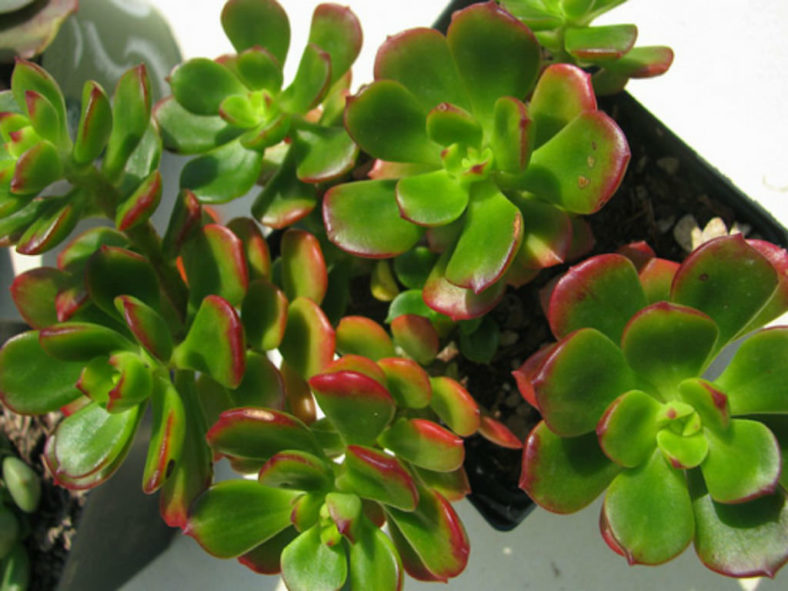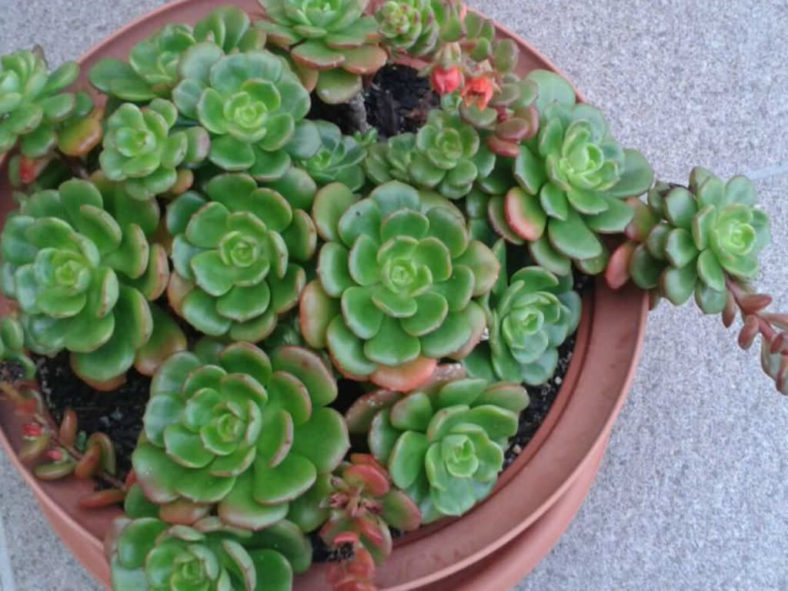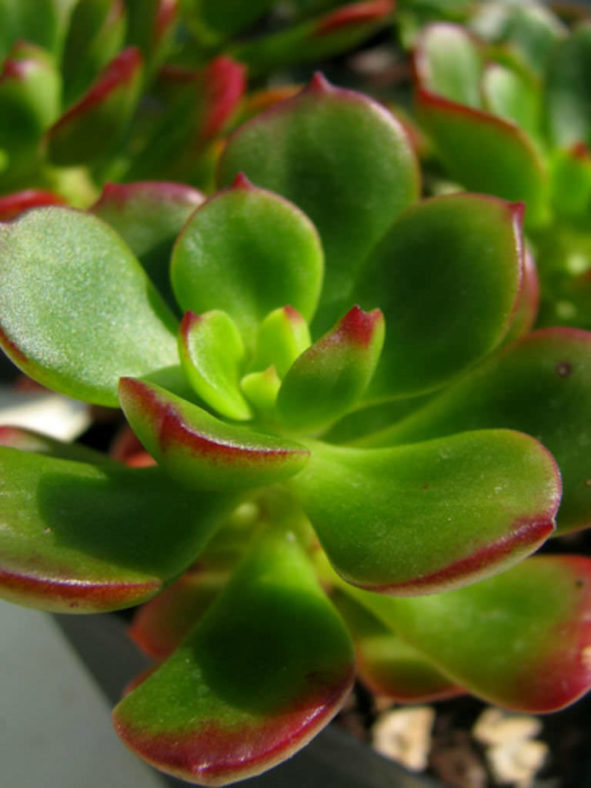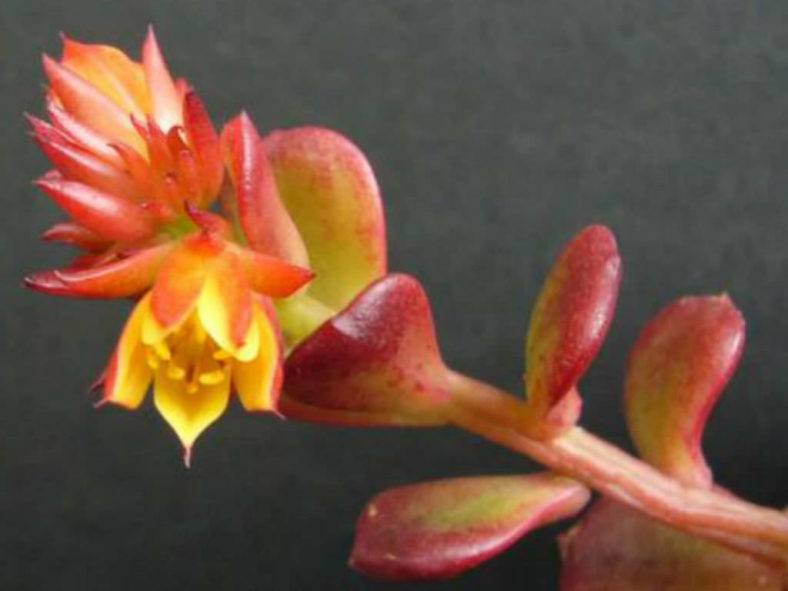Scientific Name
Echeveria multicaulis Rose
Common Name(s)
Copper Leaf, Copper Rose, Copper Roses
Scientific Classification
Family: Crassulaceae
Subfamily: Sempervivoideae
Tribe: Sedeae
Genus: Echeveria
Etymology
The specific epithet "multicaulis" (pronounced "mul-tee-KAW-liss") means "many-stemmed" and refers to the branching habit of this species.
Origin
Echeveria multicaulis is native to Mexico (Guerrero and Michoacán).
Description
Echeveria multicaulis is a lovely, highly branching succulent with naked stems crowned with a rosette of fleshy, shiny dark green leaves with red margins and tips. The stems can grow up to 3.3 feet (1 m) long, branching from the base. The leaves are obovate-cuneate and taper to a short, sharp point, measuring up to 1.6 inches (4 cm) in length and 1.2 inches (3 cm) in width. The red tinge on the leaves intensifies with increasing sunlight.
The flowers are bell-shaped, carmine to scarlet, and appear in a short, compact raceme from spring to summer.

Hybrids of Echeveria multicaulis
How to Grow and Care for Echeveria multicaulis
Hardiness: USDA hardiness zones 9a to 11b: from 20°F (-6.7°C) to 50°F (10°C).
Most common Echeveria species are not complicated succulents to grow, provided you follow a few basic rules. First, be careful never to let water sit in the rosette, as it can cause rot or fungal diseases that will kill the plant. Additionally, remove dead leaves from the bottom of the plant as it grows. These dead leaves provide a haven for pests, and Echeverias are susceptible to mealybugs. Finally, as with all succulents, maintaining careful watering habits and providing ample light will help ensure success.
Repot as needed, preferably during the warm season. To repot a succulent, ensure the soil is dry before repotting, then gently remove the pot. Knock away the old soil from the roots, removing any rotted or dead roots. Treat any cuts with a fungicide.
Most Echeverias can be easily propagated from leaf cuttings, although some are better propagated from seeds or stem cuttings. To propagate a leaf cutting, place the individual leaf in potting soil for succulents and cover the dish until the new plant sprouts.
Learn more at How to Grow and Care for Echeveria.
Links
- Back to genus Echeveria
- Succupedia: Browse succulents by Scientific Name, Common Name, Genus, Family, USDA Hardiness Zone, Origin, or cacti by Genus
Photo Gallery
Click on a photo to see a larger version.


